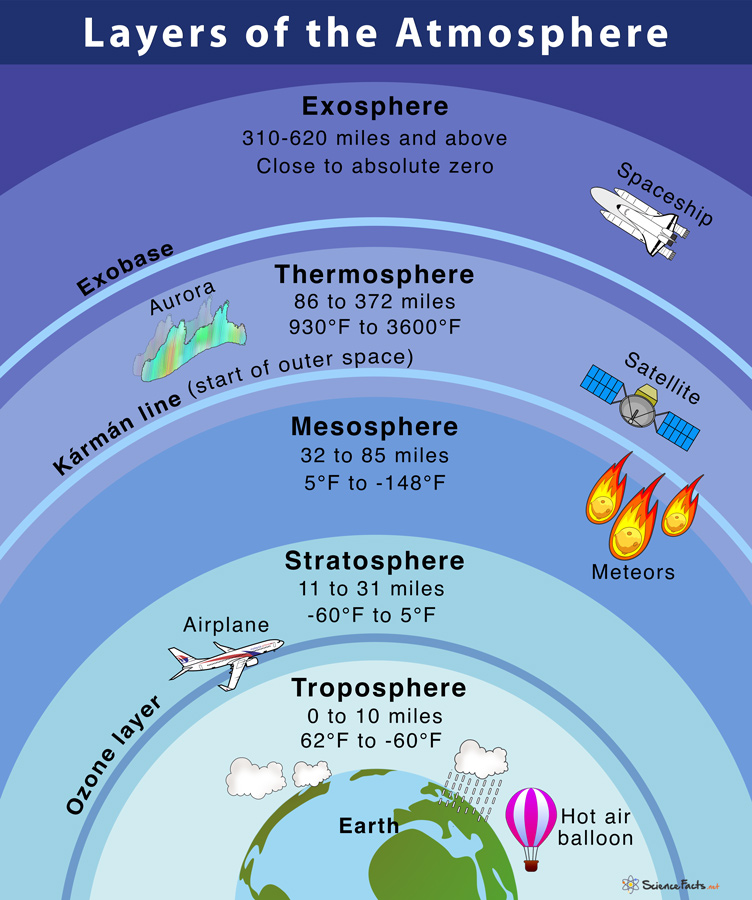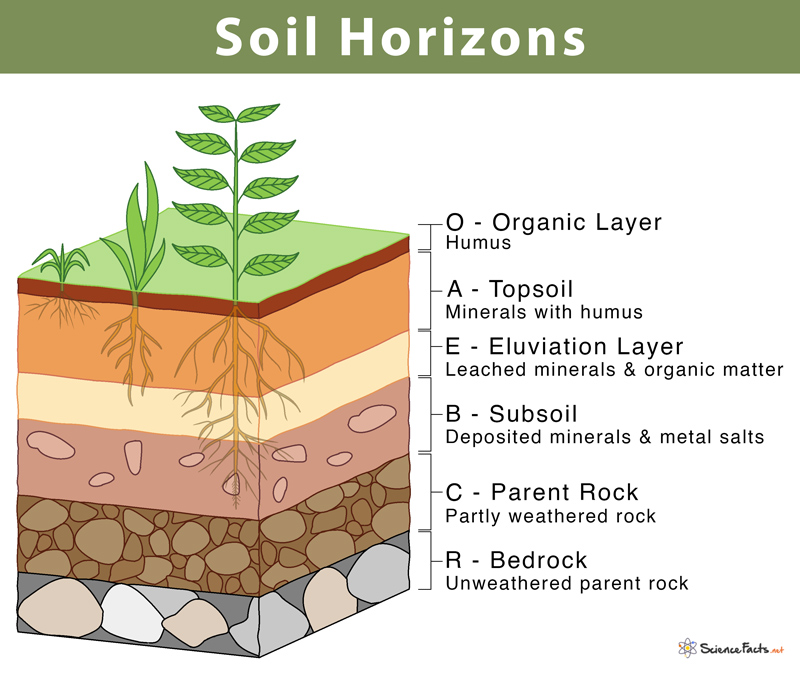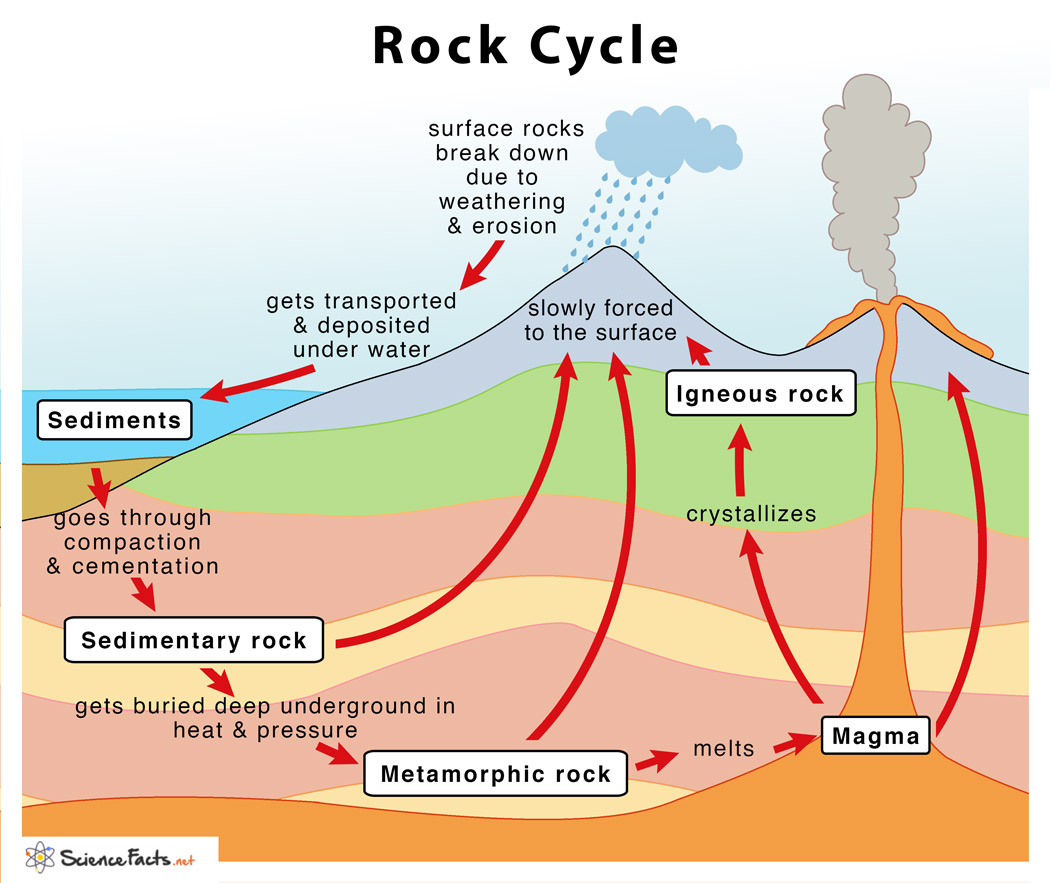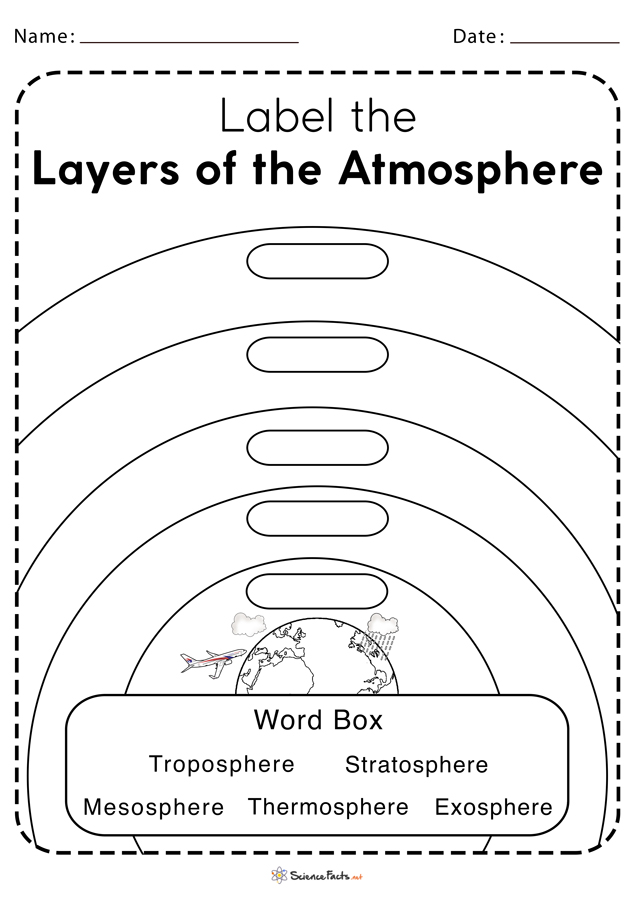Layers of the Earth’s Atmosphere
The atmosphere of the earth is the layer of gases (commonly called air) that surrounds the earth and creates an inhabitable environment, maintains temperature, causes weather, and protects its inhabitants from solar radiation.
How Many Layers Does the Earth’s Atmosphere Have and What are They Called
Scientists divide the atmosphere into 5 different layers based on factors like air pressure and density. The names of these layers, in order of lowest to highest, are:
- Troposphere
- Stratosphere
- Mesosphere
- Thermosphere
- Exosphere
1. Troposphere
Temperature: 62°F (17°C) around the lowest point to -60°F (-51°C) near the top
The troposphere is the lowest layer of the atmosphere, and it is where we live. It extends up to 5 to 10 miles (8 to 15 km) above the surface. It is the densest layer, containing more than half the volume of total air. Most of the atmospheric water vapor and dust are found here. This means that all the weather that we experience occurs at this level, as clouds are formed here. In the troposphere, the temperature falls as we get higher up, and is the lowest at the tropopause that acts as the boundary between this layer and the next. this is where Earth’s jet stream (a narrow, fast, winding air current) is found as well.
2. Stratosphere
Temperature: -60°F (-51°C) near the tropopause to 5°F (-15°C) near the next layer
Lies just above the troposphere, extending up to 31 miles (50 km) high. It is the part of the atmosphere that contains the ozone layer, which is essential for our survival as it blocks the harmful UV rays of the Sun from reaching us. Unlike the troposphere, in this layer, the temperature increases as we go higher. Also, jet aircraft and weather balloons fly in this layer as there is less turbulence. The stratopause acts as the boundary between the stratosphere and the mesosphere.
3. Mesosphere
Temperature: Ranges from 5°F (-15°C) to -148°F (-100°C) as one ascends up the layer.
The mesosphere extends from just above the stratosphere to 53-62 miles (85-100 km) high. It is the coldest layer of the atmosphere, with the temperature dropping to its lowest at the boundary between the mesosphere and thermosphere, called the mesopause. Nothing is known about this layer except that meteoroids burn up here, preventing them from reaching the Earth’s surface.
4. Thermosphere
Temperature: The temperatures in this layer depend on solar activity and can get as hot as 930°F (500°C) to 3,600°F (2,000°C) near the upper thermosphere.
This layer extends from the mesopause to about 372 miles (600 km) high. It is the hottest layer of the atmosphere, but the air density is so low that the high temperature cannot be felt at all. Most of the thermosphere is actually considered part of outer space due to this low air density. This is where the Aurora Borealis and Aurora Australis occur. They are caused by collisions between charged particles from space and the air molecules in the thermosphere and can be seen as spectacular displays of light in the sky near the north and south poles respectively.
5. Exosphere
Temperature: This layer has considerable cosmic radiation, which means the particles in the exosphere are full of kinetic energy. They can reach temperatures up to 1800°F (980°C); however, since this layer is practically a vacuum with few atoms and molecules, this stored kinetic energy rarely gets converted to thermal or heat energy. As a result, the temperature remains freezing, close to an absolute zero.
The exosphere extends from the upper boundary of the thermosphere, between 310 and 620 miles (500 and 1,000 km). The exact altitude can vary based on solar activity. Its lower boundary is called exobase or exopause, and this is the altitude above which atmospheric temperature remains almost constant. The exosphere is the least dense layer of the atmosphere, comprised of mostly helium and hydrogen.
FAQs
Ans. The thermosphere is where satellites and space stations, like the International Space Station, orbit the Earth.
Ans. Airplanes and other commercial aircraft fly in the troposphere.
Ans. The Kármán line, at 62 miles (100 km) above the surface, is often said to be the point at which outer space starts.
Ans. The ionosphere is a layer of charged particles (ions) that stretches from 48 km above the surface to around 965 km. It stretches over the mesosphere, most of the thermosphere, and some parts of the stratosphere. It is important for radio communications and is responsible for auroras. Its size varies with daytime and nighttime.
-
References
Article was last reviewed on Friday, October 6, 2023







Good info!
It is very useful prepare for competetive student,
Thank you sir.
Layers of atmosphere diagram is nice????????????????????
interesting
Would you please clarify if the jet planes and hot air ballon fly on the Troposphere or Stratosphere? The image shows in the Troposphere but the description says is on the Stratosphere.
Thank you
We have made the necessary changes in the diagram
It boring add some games to it and then it will be great
I loved all of these wonderful tips that you gave me. The facts were amazing and I loved learning about this on here. Thank you so much for this wonderful website.
Why does the chart swap temperature ranges? Some are high to low while others are low to high.
We have made the necessary changes in the diagram
I’m just wondering in which layer-sphere humans could visit for 24 hours and fly down to land on other side of the world! This way we can have fun up there and land where you want by saving long journeys and fuel!!!
I highly appreciate this Institution for the knowledage, I am glad getting in contact with this institution.
Thanks.
How can rockets survive the intense heat/radiation of the upper atmospheric layers?